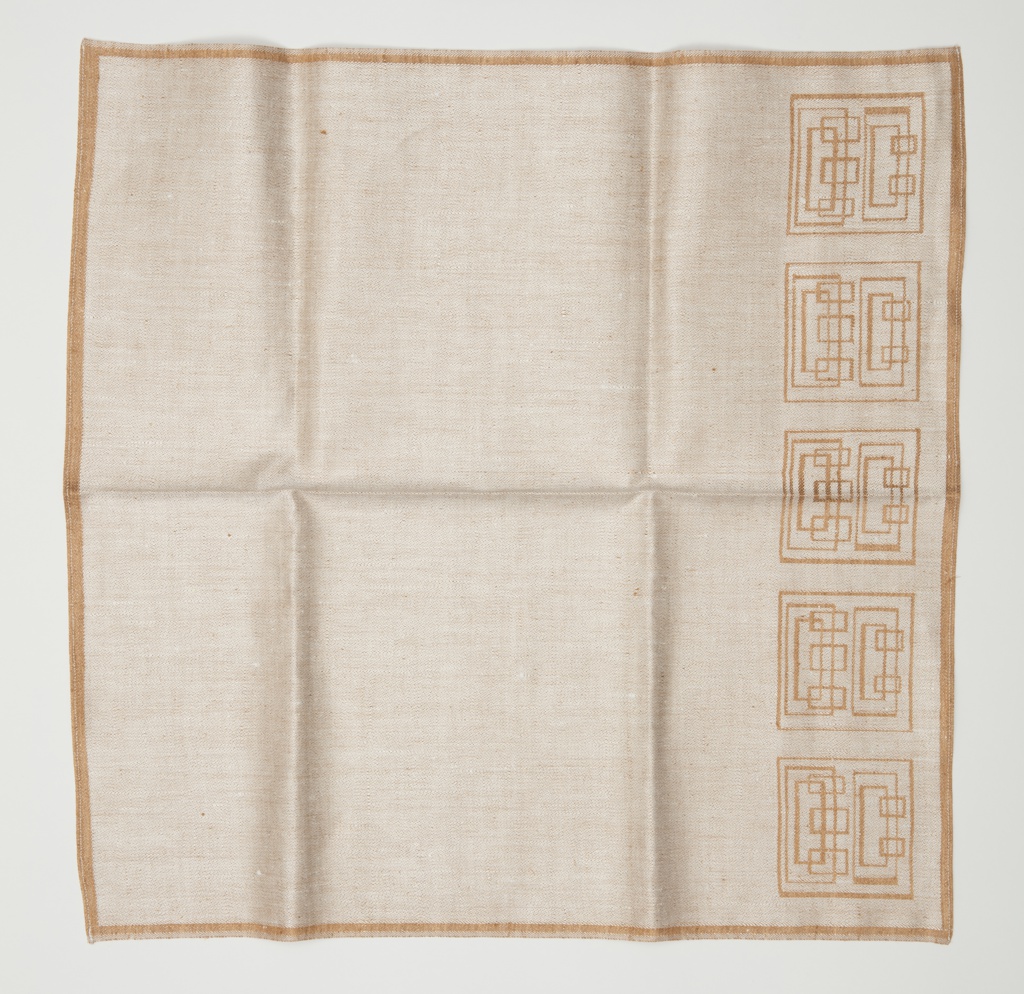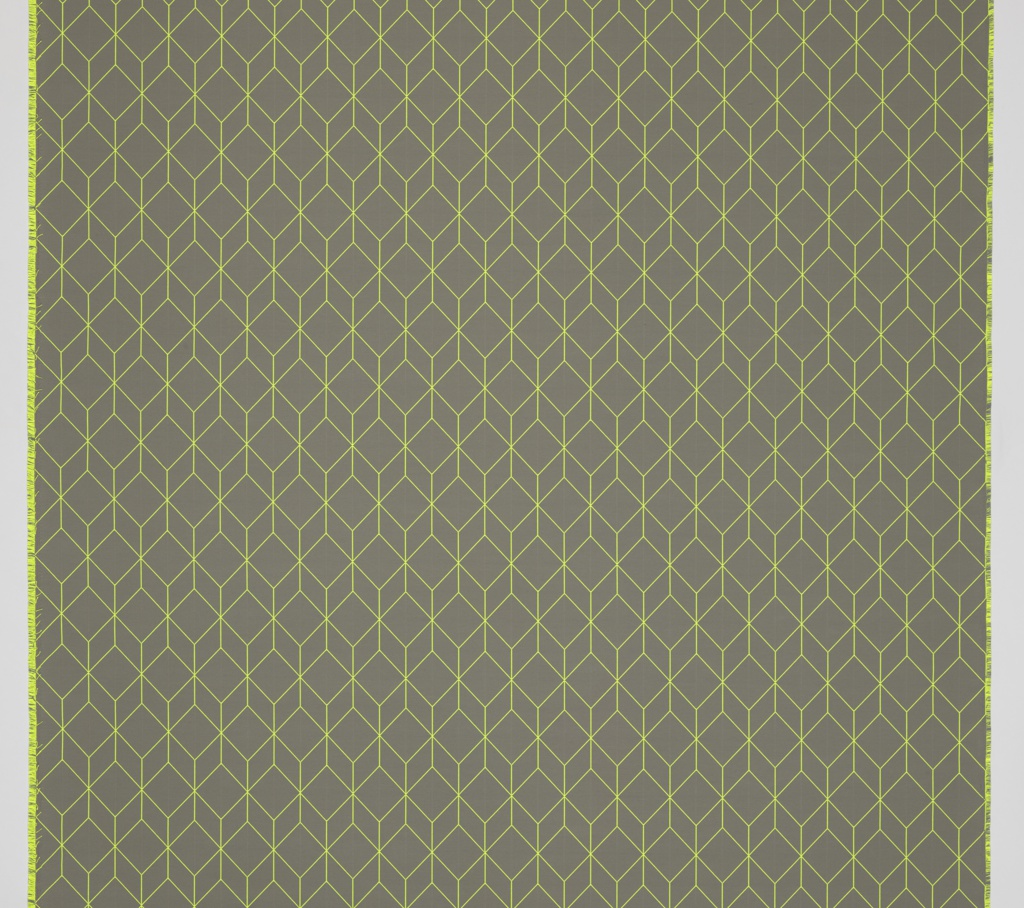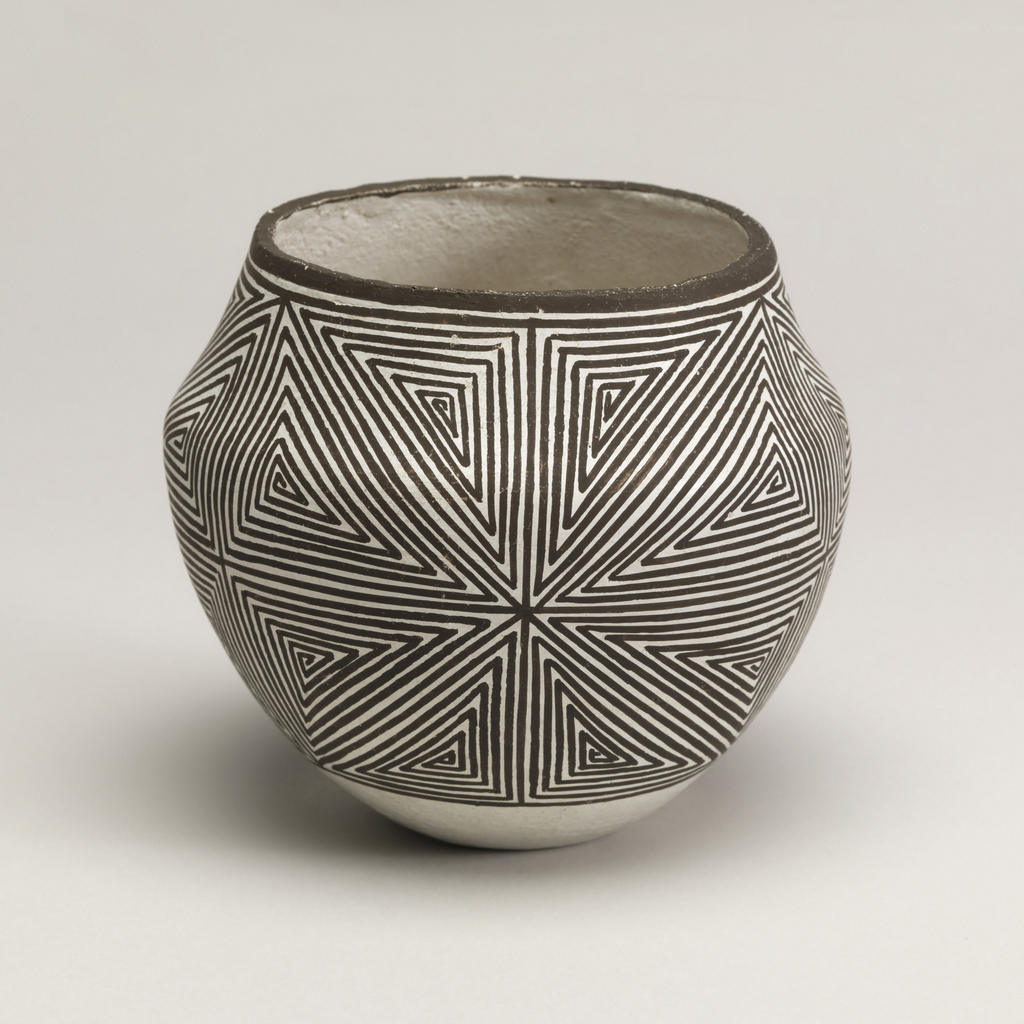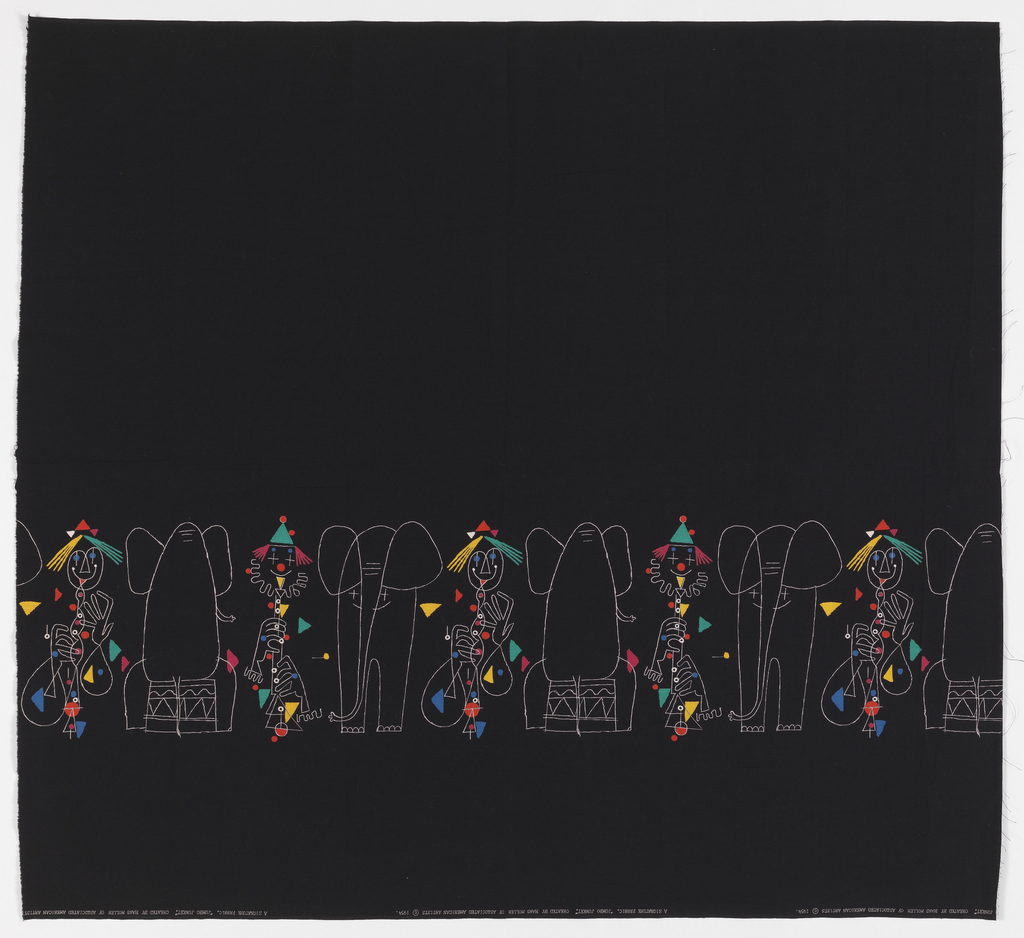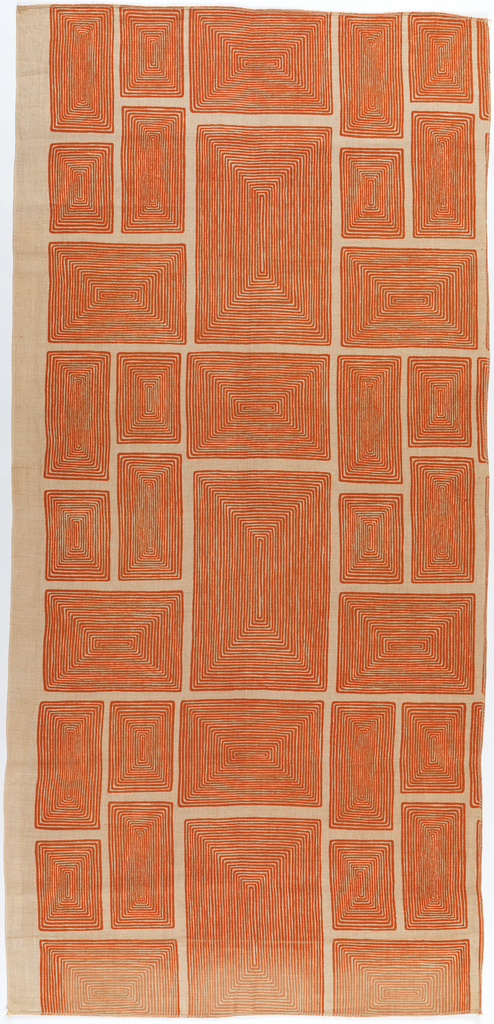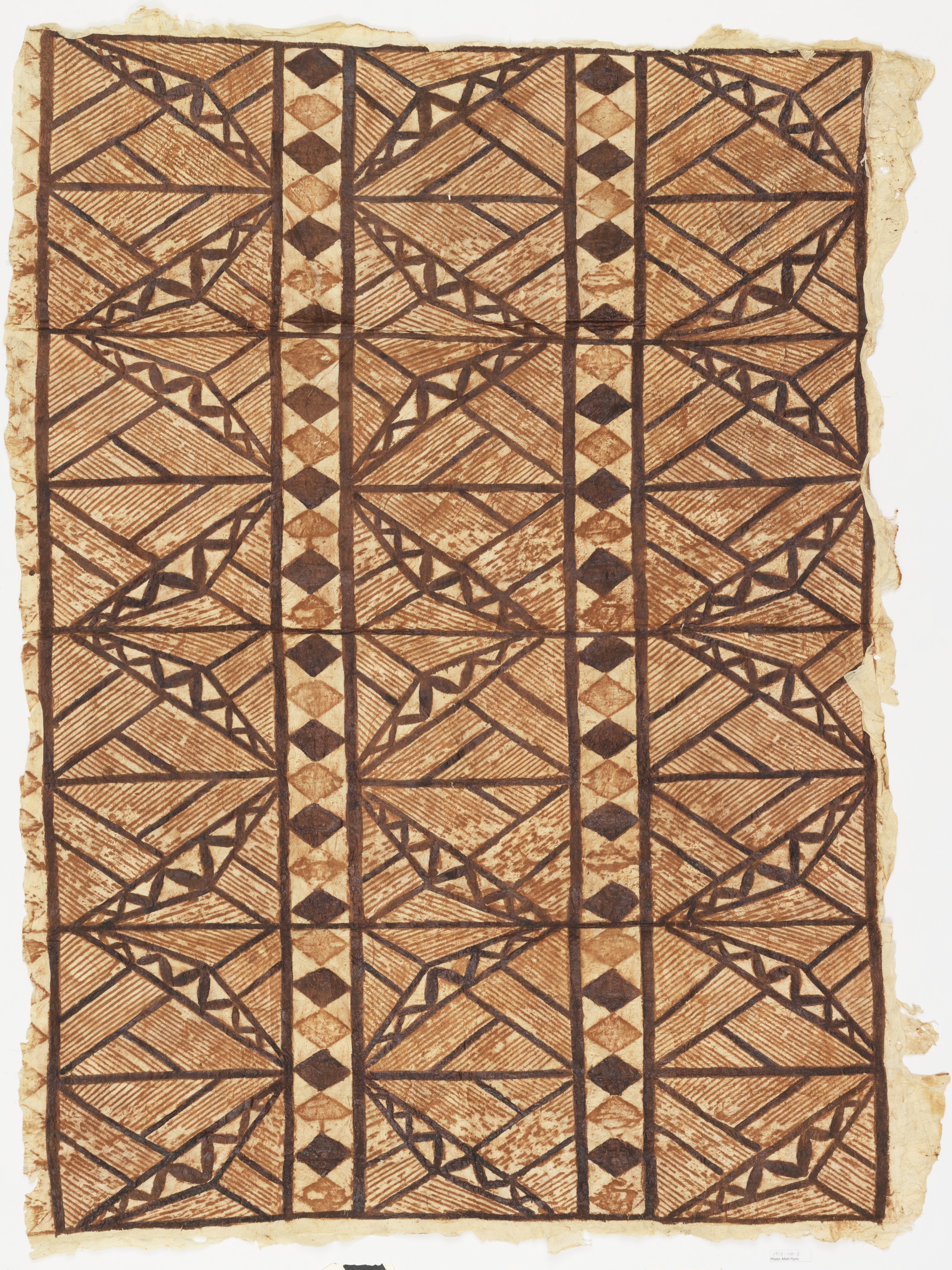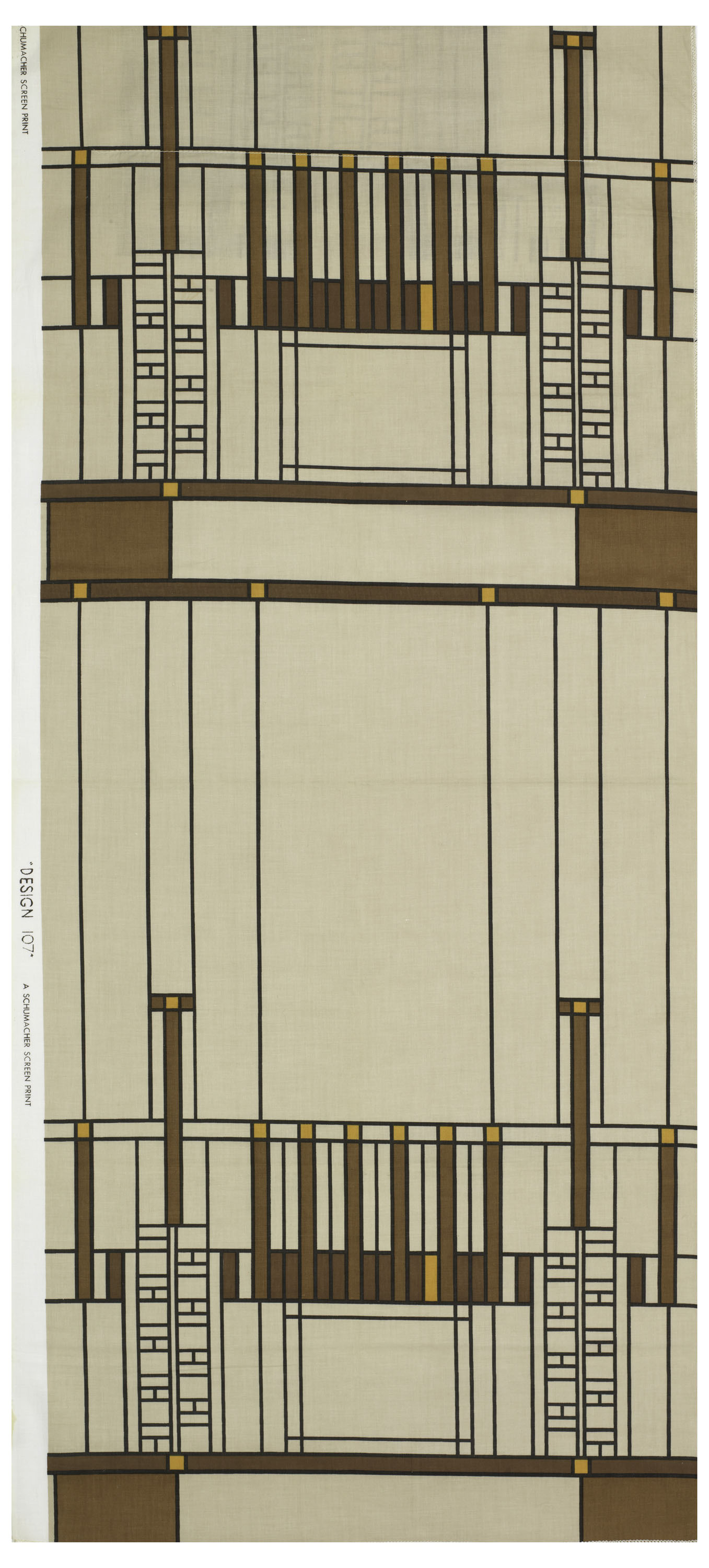The name Dora Jung (Finnish, 1906-1980) is closely associated with damask weaving, a technique in which the shiny face of satin weave and its matte reverse are manipulated to create subtle patterns. Over the course of her long career, Jung developed a variety of new techniques in damask patterning though her experiments in hand-weaving wall...
Along with Bright Grid and Bright Angle, Bright Cube is the second series of products designed by Dutch designers, Stefan Scholten (b. 1972) and Carole Baijings (b. 1973) of Scholten & Baijings in collaboration with Maharam. Their first, Blocks and Grid, is in Cooper Hewitt’s collection. Scholten & Baijings’s work is characterized by minimal forms...
In celebration of Women’s History Month, March Object of the Day posts highlight women designers in the collection. Today’s blog post was written by Rebekah Pollock and originally published November 19, 2016. Lucy Martin Lewis learned to make pottery from her great-Aunt and other women living in Sky City, a remote three hundred foot high sandstone...
Hans Moller, the German-born abstractionist known as a colorist, brought his predilection for vivid hues to his textile designs. His work was part of an assortment of imaginative midcentury designs produced by M. Lowenstein & Sons in partnership with Associated American Artists, a collective dedicated to creating accessible art. In Jumbo Junket, Moller’s circus-themed border...
In 2005, The New York Times reported that expressionist artist Vincent Malta, age 83, was beginning to achieve success in making a living as an artist.(1) A longtime teacher at the Art Students League of New York whose paintings appeared in galleries from time to time, Malta filled the gaps in his showing career by...
This printed textile, Campagna, by Angelo Testa epitomizes his distinct design vocabulary. Likely named after Testa’s friend, Paul Campagna, Testa designed it around 1950 for Knoll Associates. Campagna utilizes Testa’s preferred linear and geometric forms, commonly associated with his Bauhaus training. The hard edges of the concentric rectangles in this textile, however, have been softened...
Tapa, a general term used to describe Polynesian bark cloth, is made from the inner bark of the Broussonetia tree that has been hand beaten, scraped, pressed, and patterned to create printed cloth. In Samoa, two methods are used to produce large pieces of printed bark cloth. One method consists of pasting smaller strips of...
Toward the end of his life, in 1955, Frank Lloyd Wright produced the “Taliesin Ensemble,” a line of home furnishings for those who did not live in one of his houses. Wright partnered with numerous firms to complete the project, among them Heritage-Henredon, with whom he produced a line of furniture, and the Martin Senour...
